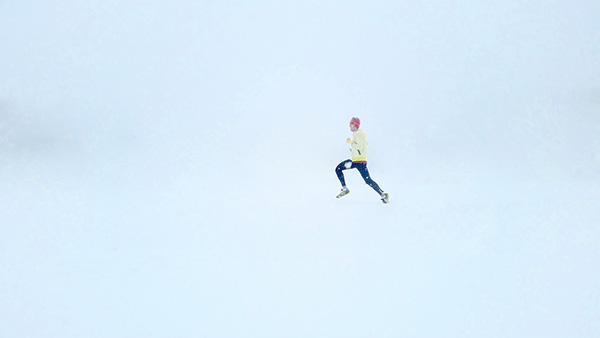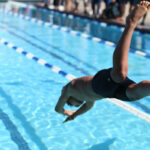Training for a triathlon is challenging, but adding winter into the mix, and it gets even tougher. For me, this has been a whole new adventure. I haven’t completed a triathlon yet, but I’m training hard for one, and this winter is my first test. I’ve already felt the cold biting as I run, but there’s no turning back. With a little planning and a solid indoor setup, winter training can be done without sacrificing too much of what makes triathlon training effective. Here’s what I’ve learned along the way and how I’m making it work.
Running Outdoors in Winter
Running is one area where winter training is actually manageable. I enjoy heading outside for my runs, especially when the air is crisp, and there’s just something invigorating about running in cooler weather. But, I quickly learned that cold-weather running is all about proper layering and smart planning. I didn’t realize at first that too many layers could actually lead to overheating, so now I start with a moisture-wicking base layer, add a breathable long sleeve, and a lightweight, wind-resistant jacket on top. Gloves and a beanie have become essential parts of my gear, too, because my fingers and ears freeze without them.
When it’s extra cold, I plan my routes with extra care. I look for gravel paths or well-cleared trails to avoid icy patches, and I stick to areas with good lighting if I’m running after dark. The treadmill at the gym is a good backup if the weather or footing gets too dangerous, though running outdoors is still my preference. Even on shorter runs, staying hydrated is crucial. I found that running in cold, dry air can be dehydrating without me even realizing it.

Swimming Indoors
With open-water swimming off the table during winter, finding a place to swim was a top priority. Luckily, I found a local gym with a pool and took myself a membership. This has been a lifesaver, as I can work on my swim endurance and technique without freezing. Since I’m newer to swimming, getting access to a pool where I can practice consistently is key. I try to hit the pool twice a week to build up my stamina and to make sure I maintain my feel for the water.
I’ve noticed that splitting my swims into intervals has really helped me build endurance. Instead of just doing lap after lap, I now focus on certain sets to work on my form, breathing, and strength. Plus, swimming indoors means I can hit the gym afterward, which is a nice bonus. Since my gym has weights and treadmills, I often throw in a core workout or some strength training after I swim to focus on the muscles that help my overall triathlon performance.
Indoor Cycling
One of the biggest challenges with winter triathlon training has been finding a way to keep up with cycling. I’d love to get a smart trainer like a Wahoo Kickr to use at home, but those setups are seriously expensive! Since I’m just starting out, I decided to hold off on investing in one of those and opted instead for indoor cycling at my local gym. It’s not quite the same as riding on the road, but it’s working for now.
Without the fancy tech, I can’t do virtual rides on Zwift or train with live resistance changes, but I make up for it with intervals and hill simulations on the stationary bike at the gym. It’s definitely not as fun as actual cycling, but it’s a great workout, and the challenge of staying motivated indoors has taught me a lot. I like to mix things up with different interval patterns, and I keep a towel and water handy because it gets hot fast in there. My setup isn’t perfect, but it’s getting the job done until I’m ready to invest in my own smart trainer.

Building Strength and Core Stability in the Gy
With winter keeping us indoors, I’ve been really getting into some extra strength training lately. There’s a gym nearby, so I can focus on my core stability, which is super important for all three disciplines in triathlons.
Having a strong core really helps me maintain my form during those long training sessions. I’ve been spending time on exercises like planks, Russian twists, and leg raises, these not only work my core but also improve my balance and endurance.
Hitting the weights is great for building my legs. Squats, lunges, and deadlifts are my favorite, and they’ve really helped my running and cycling. I can totally feel how leg strength affects my speed and stamina, especially when I’m tackling those hills. I also make sure to include some upper body workouts like rows and lat pull-downs since upper body endurance is a game changer for swimming.

Staying Consistent and Motivated in the Winter
Staying pumped during winter training can really be a wild ride! Some days, it’s dark and freezing outside, and getting out of bed early to hit the pool or gym feels like a crazy challenge. But I keep reminding myself that all this work I’m putting in now will totally pay off when race season hits. To keep my momentum going, I’ve started setting small goals for myself each week, like adding a few more laps to my swim or trying to run just a bit faster on the treadmill.
Getting into a solid routine has helped a ton, too. I try to stick to regular workout days, switching between swims, runs, and gym sessions. Having a plan each week makes it easier to stay focused, even when I’m not feeling motivated. Winter can feel like a pain in the butt, but keeping up with my training is important for building a strong aerobic base, which is important for the endurance needed in a triathlon.
Conclusion
Training for a triathlon in winter comes with its challenges, but with a little flexibility and some creativity, it’s totally doable. Running in the cold air, cycling indoors at the gym, or swimming in the pool, I’ve found ways to adapt and keep my training on track. Even without all the fancy gear or perfect weather, I’m still building strength, stamina, and confidence.
If you’re just starting with winter training or figuring out triathlons, don’t let the season get you down. Grab a few items, be open to trying different indoor options, and remember that every single session brings you one step closer to your goal. The effort you put in now will pay off when race season starts, so embrace the winter and keep your eyes on the prize.





